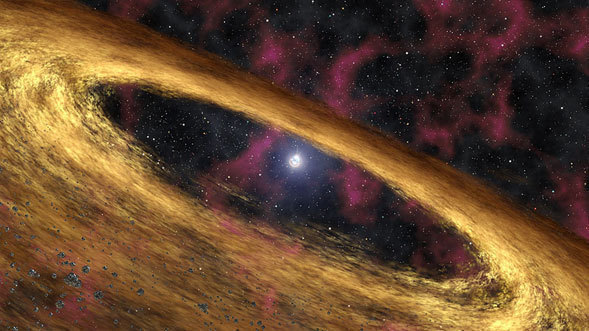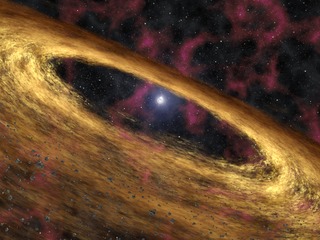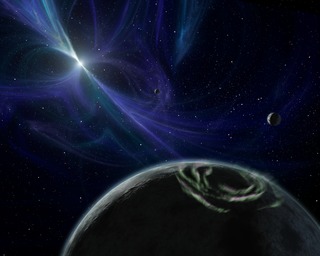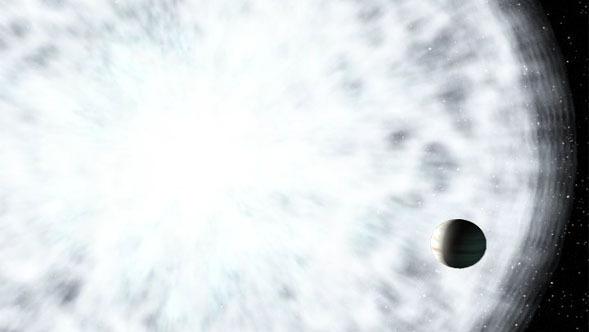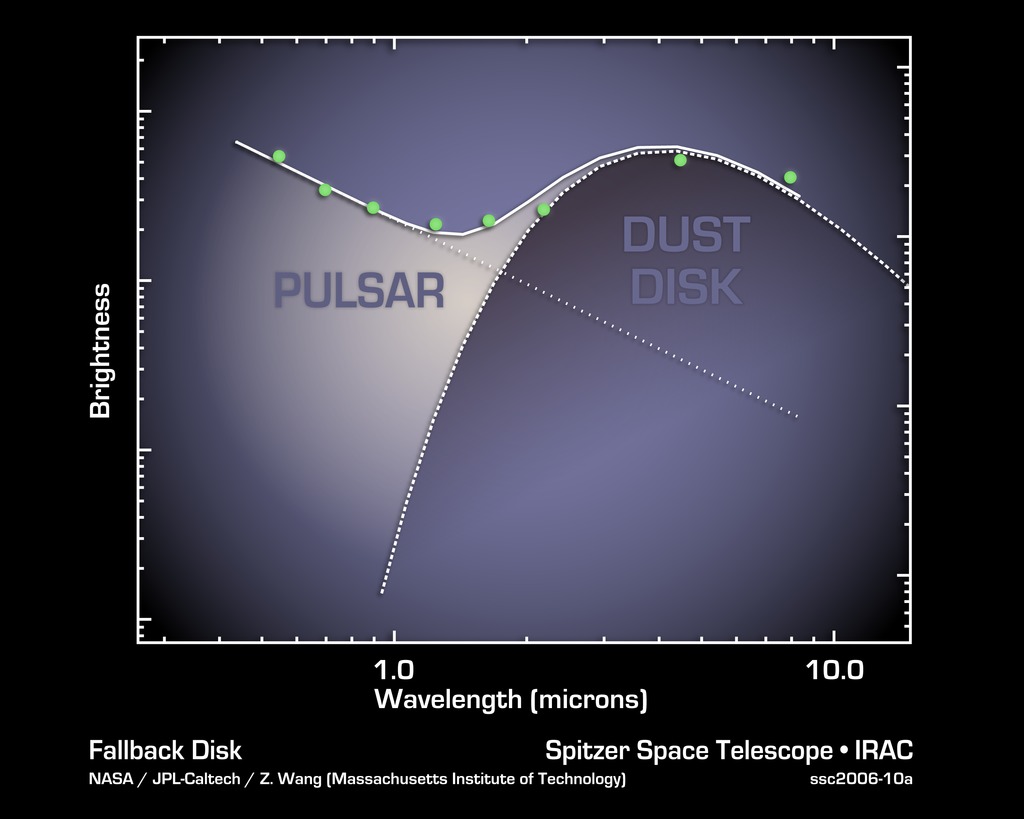
Credit: NASA/JPL-Caltech/Z. Wang (MIT)
Chart • April 5th, 2006 • ssc2006-10a
ssc2006-10a
This plot tells astronomers that a pulsar, the remnant of a stellar explosion, is surrounded by a disk of its own ashes. The disk, revealed by the two data points at the far right from NASA's Spitzer Space Telescope, is the first ever found around a pulsar. Astronomers believe planets might rise up out of these stellar ashes.
The data in this plot, or spectrum, were taken by ground-based telescopes and Spitzer. They show that light from around the pulsar can be divided into two categories: direct light from the pulsar, and light from the dusty disk swirling around the pulsar. This excess light was detected by Spitzer's infrared array camera. Dust gives off more infrared light than the pulsar because it's cooler.
The pulsar, called 4U 0142+61, was once a massive star, until about 100,000 years ago, when it blew up in a supernova explosion and scattered dusty debris into space. Some of that debris was captured into what astronomers refer to as a "fallback disk," now circling the leftover stellar core, or pulsar. The disk resembles protoplanetary disks around young stars, out of which planets are thought to be born.
The data have been corrected to remove the effects of light scattering from dust that lies between Earth and the pulsar.
The ground-based data is from the Keck I telescope atop Mauna Kea, Hawaii.
About the Object
- Name
- 4U 0142+61
- Type
- Star > Evolutionary Stage > Neutron Star > Pulsar
- Star > Circumstellar Material > Disk > Debris
- Distance
- 12,700 Light Years
Color Mapping
| Band | Wavelength | Telescope |
| Infrared | 4.5 µm | Spitzer IRAC |
| Infrared | 8.0 µm | Spitzer IRAC |
